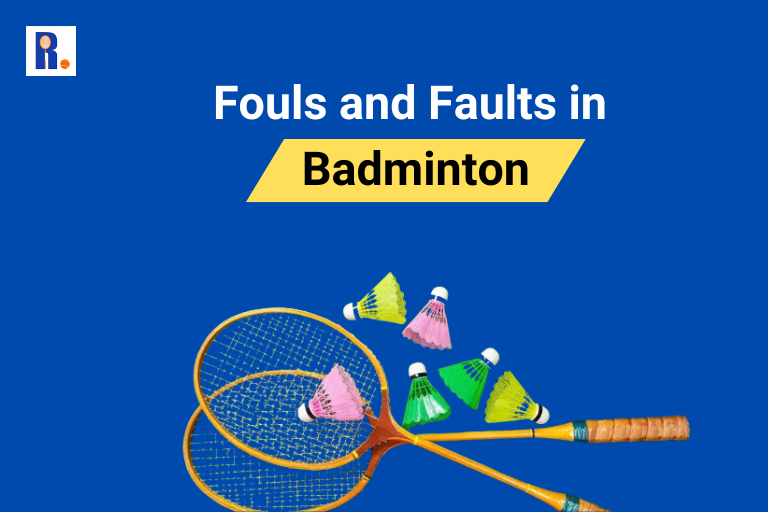Understand the Fouls and Faults in Badminton

Badminton, a fast-paced and dynamic sport, requires not only skill and strategy but also a thorough understanding of its rules and regulations. Among these rules are fouls and faults, which can result in point penalties or even the loss of a rally. In this blog post, we’ll delve into the common fouls and faults in badminton and how players can avoid them to ensure fair play and competitive integrity.
1. Service Faults: The service is one of the most critical aspects of badminton, and there are specific rules governing its execution. Common service faults include:
- failing to hit the shuttlecock below the waist of the server.
- Stepping on or over the service line before making contact with the shuttlecock.
- Serving from an incorrect position or outside the service court boundaries.
- Deliberately trying to deceive the opponent with illegal service actions, such as a flick or a double motion.
To avoid service faults, players must practice their service technique diligently and ensure that they adhere to the rules governing the service motion and placement.
2. Foot Faults: Foot faults occur when a player’s feet are not positioned correctly during gameplay, particularly during the serve or when returning shots. Common foot faults include:
- Stepping on the service line or outside the service court while serving.
- Lifting the foot off the ground before striking the shuttlecock during a serve.
- Failing to maintain proper foot positioning within the boundaries of the court during play.
Players must pay close attention to their footwork and ensure that they maintain proper positioning to avoid foot faults and maintain a legal stance throughout the game.
3. Faults During Play: During rallies, various faults can occur that result in the loss of a point or the end of a rally. Some common faults include:
- Hitting a shuttlecock into the net or outside of the boundaries.
- Making contact with the shuttlecock more than once consecutively.
- Touching the net with the racket, body, or clothing while the shuttlecock is in play.
- Interfering with the opponent’s shot or movement, such as obstructing their swing or distracting them intentionally.
To avoid faults during play, players must focus on their technique, maintain proper court positioning, and respect their opponent’s space and movements.
4. Behavioral Fouls: In addition to technical faults, badminton also has rules governing player conduct and sportsmanship. Behavioral fouls include:
- Using offensive language or gestures.
- Displaying unsportsmanlike behavior, such as arguing with the referee or intentionally distracting the opponent.
- Delaying the game unnecessarily or stalling tactics to gain an advantage.
Players must conduct themselves with integrity and respect for the game, their opponents, and the officials to avoid behavioral fouls and maintain the spirit of fair play in badminton.
5. Double Hit: A double hit occurs when a player hits the shuttlecock twice in succession with their racket during a single stroke or action. This can happen unintentionally, often when the shuttlecock rebounds off the racket unexpectedly. Double hits are considered faults and result in the loss of a rally or point for the player committing the infraction.
6. Out of Position: Players are required to maintain proper court positioning during play. If a player is out of position, meaning they are not in their designated area of the court based on their position (e.g., singles or doubles), it can result in a fault. Being out of position can lead to an opponent exploiting open areas of the court, potentially resulting in lost points.
7. Time Violations: Players are expected to maintain a reasonable pace during a match and adhere to time limits for serving, receiving, and changing ends. Excessive delays or stalling tactics, such as intentionally slowing down the game or taking too much time between points, can result in time violations and penalties, including point deductions or loss of serve.
8. Shuttlecock Touching the Ground: If the shuttlecock touches the ground or any part of the court boundary lines, it is considered out of play, resulting in a fault. This can occur when a player fails to return the shuttlecock before it lands within the boundaries of the court or when a shot goes wide or long.
9. Let Service: A let service occurs when a serve is disrupted or hindered by external factors, such as a shuttlecock hitting the net and landing in the service court, or when there is interference from outside the court. In such cases, the rally is replayed without any penalty to either player or team.
10. Service Overhead: During service, players must ensure that the racket head is pointing downwards when striking the shuttlecock. If the racket head is pointing upwards or sideways during the service motion, it is considered a service overhead fault, resulting in the loss of a rally or point.
Fouls and faults are an integral part of badminton, and understanding and adhering to the rules governing them are essential for every player. By practicing proper technique, maintaining court awareness, and demonstrating good sportsmanship, players can minimize the risk of committing fouls and faults and enjoy a fair and competitive game of badminton.